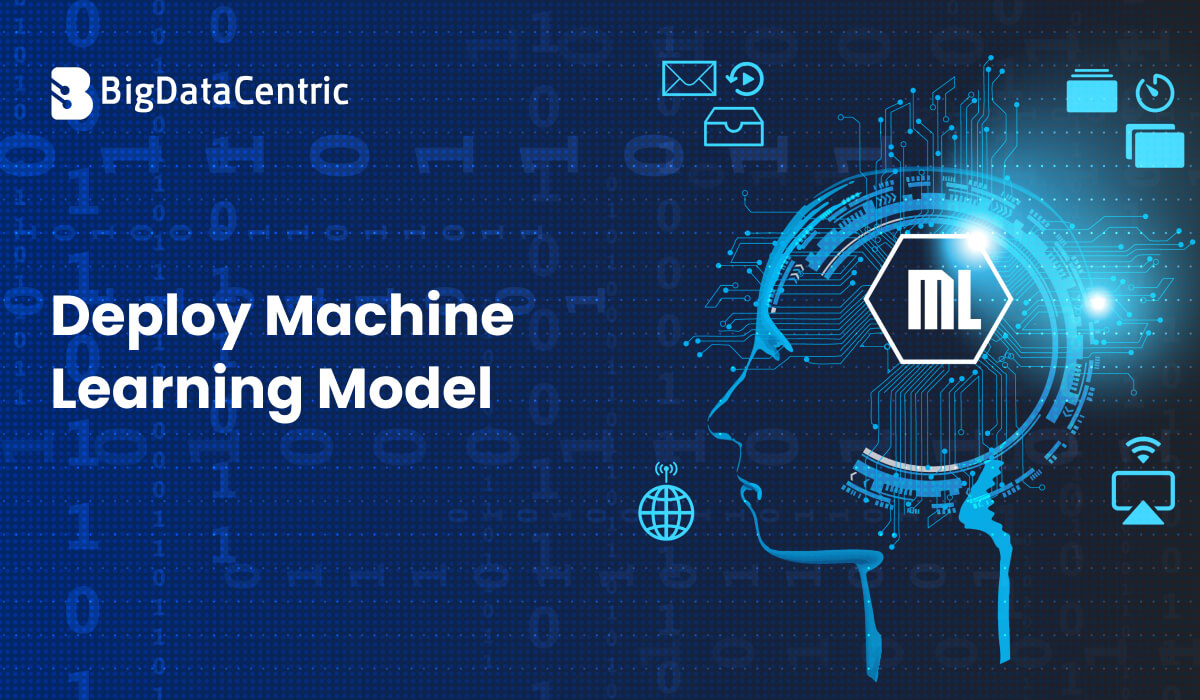Get in Touch With Us
Submitting the form below will ensure a prompt response from us.
You’ve trained your machine learning model, optimized its accuracy, and validated its performance. But now comes the real-world challenge: deploy machine learning model so it can start making predictions in production environments.
This guide will walk you through the most common ways to deploy ML models using Python, Flask, Docker, cloud services, and more.
What Does Model Deployment Mean?
Model deployment is the process of making a machine learning model available in a production environment where it can receive input data and return predictions. It’s the bridge between development and delivering real-world value.
Common Methods to Deploy Machine Learning Models
REST API Using Flask (Local or Cloud)
One of the easiest ways to deploy a model is by wrapping it in a REST API using Flask.
Example: Flask Deployment of a Pickled Model
python
from flask import Flask, request, jsonify
import pickle
import numpy as np
# Load model
model = pickle.load(open("model.pkl", "rb"))
app = Flask(__name__)
@app.route('/predict', methods=['POST'])
def predict():
data = request.get_json(force=True)
prediction = model.predict([np.array(data['features'])])
return jsonify({'prediction': prediction.tolist()})
if __name__ == '__main__':
app.run(port=5000)
Run the server and send a POST request with data to get predictions.
Deploy Using Docker Containers
Containers allow you to package your model, dependencies, and API into a portable environment.
Example: Dockerfile
Dockerfile
FROM python:3.10
WORKDIR /app
COPY requirements.txt .
RUN pip install -r requirements.txt
COPY . .
CMD ["python", "app.py"]
Commands to Build and Run:
docker build -t ml-api .
docker run -p 5000:5000 ml-api
Deploy on AWS SageMaker
Amazon SageMaker provides a managed service to train, deploy, and monitor ML models.
Steps:
- Upload model to S3
- Create a SageMaker endpoint
- Deploy using pre-built Docker containers or custom ones
Code Sample using Boto3:
python
import boto3
sm = boto3.client('sagemaker')
response = sm.create_model(
ModelName='my-ml-model',
PrimaryContainer={
'Image': 'xyz123.amazonaws.com/myimage',
'ModelDataUrl': 's3://mybucket/model.tar.gz',
},
ExecutionRoleArn='arn:aws:iam::123456:role/SageMakerRole'
)
Google Cloud AI Platform / Vertex AI
Google’s managed platform allows auto-scaling and GPU support for deployed models.
gcloud ai models upload \
--region=us-central1 \
--display-name=my-model \
--artifact-uri=gs://my_bucket/model/ \
--container-image-uri=gcr.io/cloud-aiplatform/prediction/sklearn-cpu.0-24:latest
Security, Monitoring, and Scaling
Once deployed, your model should be:
- Secure (HTTPS, API keys, auth tokens)
- Scalable (using load balancers or Kubernetes)
- Monitored (log requests, prediction time, and errors)
Example: NGINX reverse proxy + HTTPS
nginx
server {
listen 443 ssl;
server_name api.mysite.com;
ssl_certificate /etc/ssl/cert.pem;
ssl_certificate_key /etc/ssl/key.pem;
location / {
proxy_pass http://localhost:5000;
}
}
Deployment Checklist
| Task | Status |
|---|---|
| Serialize model (Pickle/Joblib) | ✅ |
| Create REST API or Lambda handler | ✅ |
| Dockerize the app | ✅ |
| Choose hosting/cloud platform | ✅ |
| Secure endpoint | ✅ |
| Add monitoring/logging | ✅ |
Bonus: CI/CD for ML Deployment
Automate deployment pipelines with:
- GitHub Actions
- GitLab CI
- Jenkins
- MLflow for model tracking and deployment
yaml
# Sample GitHub Actions for Docker Deployment
name: Deploy Model API
on:
push:
branches: [ main ]
jobs:
deploy:
runs-on: ubuntu-latest
steps:
- uses: actions/checkout@v2
- name: Build Docker Image
run: docker build -t my-ml-api .
- name: Run Container
run: docker run -d -p 5000:5000 my-ml-api
Ready to Deploy Your Machine Learning Model?
We help companies productionize ML models with real-time APIs and secure cloud deployments.
Conclusion
Deploying a machine learning model is where theory meets practice. Whether you’re creating an API using Flask, packaging it with Docker, or deploying to the cloud, there are many options to fit your team’s scale, tech stack, and use case.
With the right tooling and a few best practices, you can serve predictions reliably, securely, and at scale.













